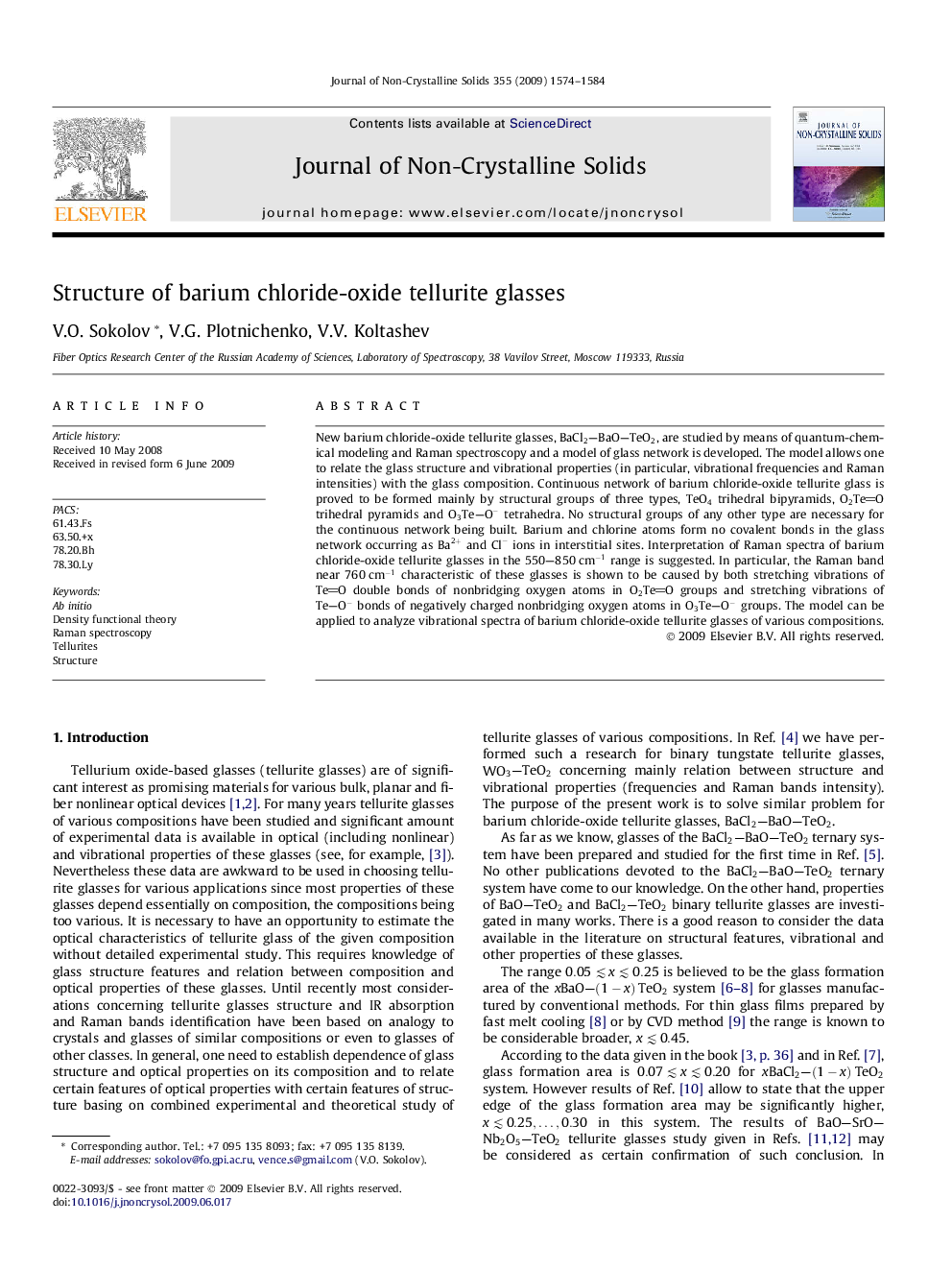| Article ID | Journal | Published Year | Pages | File Type |
|---|---|---|---|---|
| 1483397 | Journal of Non-Crystalline Solids | 2009 | 11 Pages |
New barium chloride-oxide tellurite glasses, BaCl2–BaO–TeO2BaCl2–BaO–TeO2, are studied by means of quantum-chemical modeling and Raman spectroscopy and a model of glass network is developed. The model allows one to relate the glass structure and vibrational properties (in particular, vibrational frequencies and Raman intensities) with the glass composition. Continuous network of barium chloride-oxide tellurite glass is proved to be formed mainly by structural groups of three types, TeO4TeO4 trihedral bipyramids, O2TeOO2TeO trihedral pyramids and O3Te–O-O3Te–O- tetrahedra. No structural groups of any other type are necessary for the continuous network being built. Barium and chlorine atoms form no covalent bonds in the glass network occurring as Ba2+Ba2+ and Cl-Cl- ions in interstitial sites. Interpretation of Raman spectra of barium chloride-oxide tellurite glasses in the 550–850cm-1 range is suggested. In particular, the Raman band near 760cm-1 characteristic of these glasses is shown to be caused by both stretching vibrations of TeOTeO double bonds of nonbridging oxygen atoms in O2TeOO2TeO groups and stretching vibrations of Te–O-Te–O- bonds of negatively charged nonbridging oxygen atoms in O3Te–O-O3Te–O- groups. The model can be applied to analyze vibrational spectra of barium chloride-oxide tellurite glasses of various compositions.
